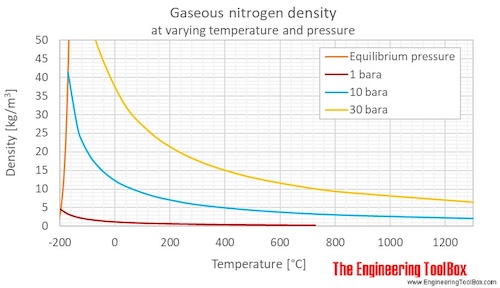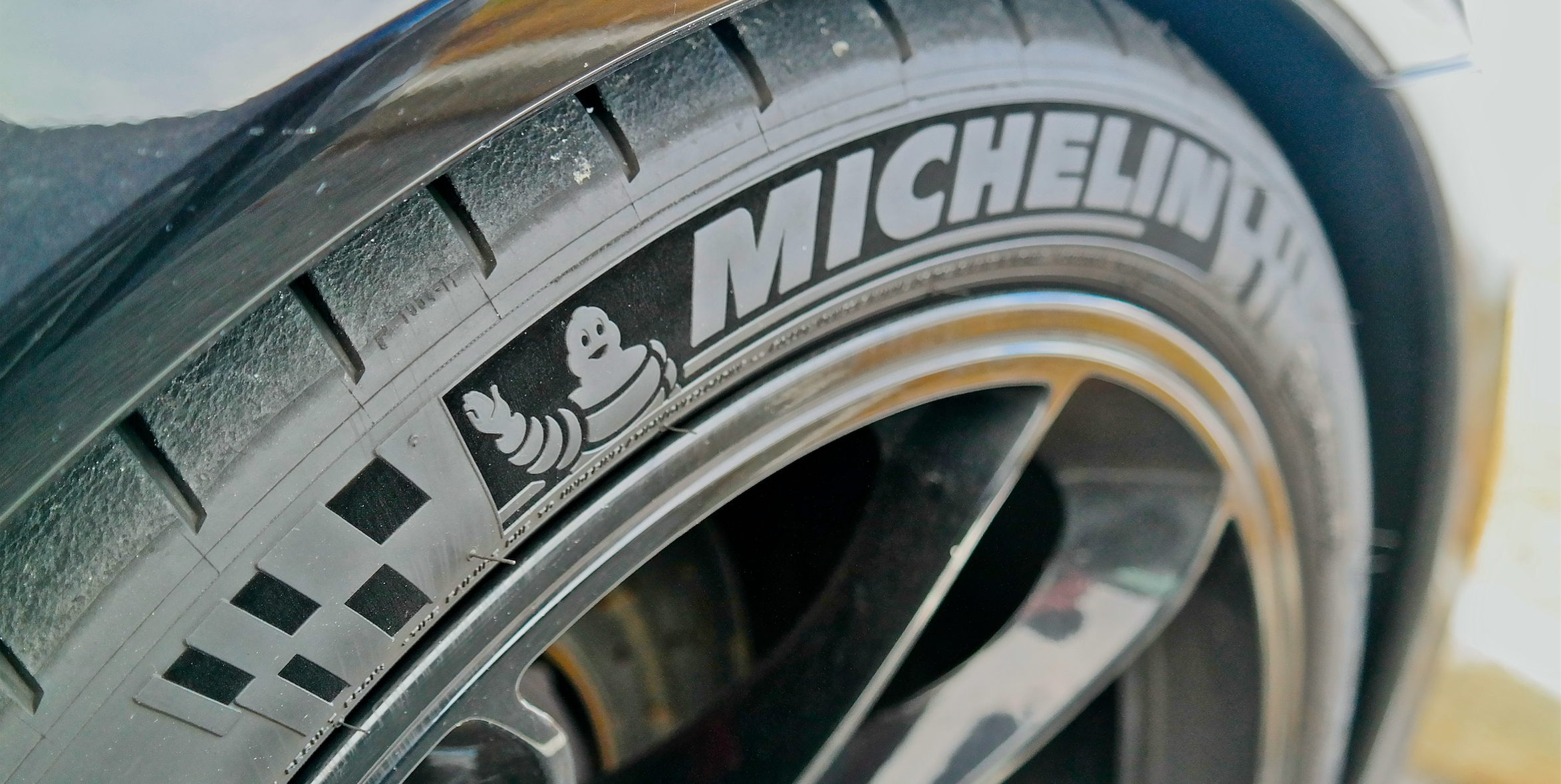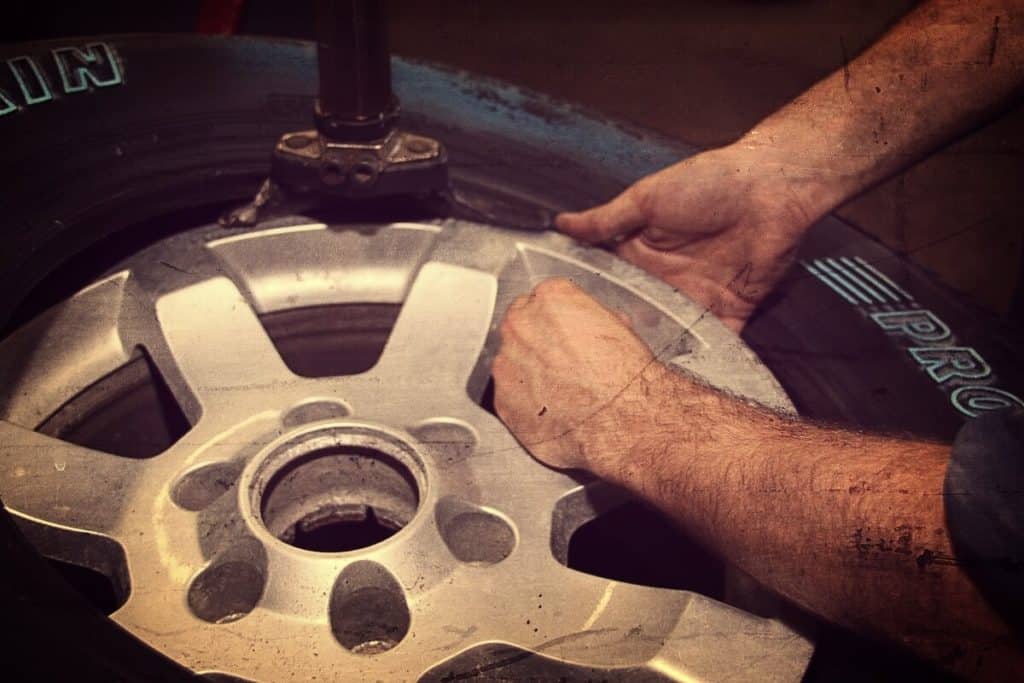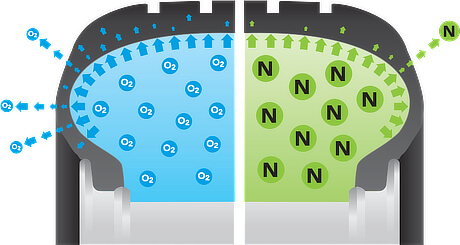- Get link
- X
- Other Apps
In other words although nitrogen versus air offers significant advantages in theory it doesnt work well in the real world. Summary Organic vs Inorganic Nitrogen.
 Consumer Reports Conducted A Study Comparing Nitrogen Versus Air Loss In Tires To Determine If This Benefit Of Nitrogen Tires For Sale Wheel Alignment Nitrogen
Consumer Reports Conducted A Study Comparing Nitrogen Versus Air Loss In Tires To Determine If This Benefit Of Nitrogen Tires For Sale Wheel Alignment Nitrogen
While the air ordinarily used to fill tires is already 78 nitrogen advocates say that filling with pure 93 to 95 nitrogen does make a difference.

Nitrogen versus air. Because of this nitrogen wont seep out of your tires as quickly as air will helping to maintain proper pressure for a longer period of time. Soil aquatic systems and air. 1 lbmft3 16018 kgm3.
Because of nitrogens inert properties it is often used in highly specialized tire service applications andor demanding environments. We expect the theoretical benefits to be reduced in practical use due to. Tires on rims tend to lose pressure over time and smaller molecules migrate out faster.
Think of Nitrogen as premium fuel compared to Air which is a regular unleaded fuel. Nitrogen is a larger molecule than oxygen the other main component in air. Nitrogen is becoming more widely available as an alternative to air for inflating tires.
GMs Position on the Use of Nitrogen Gas in Tires General Motors does not oppose the use of purified nitrogen as an inflation gas for tires. To determine nitrogens weight relative to air it is important to determine whether the nitrogen in the atmosphere is lighter or heavier than the oxygen. Both organic and inorganic nitrogen forms occur in the environment.
Nitrogen is non-reactive and wont degrade tyre life no moisture no corrosion. In this video I talk about putting nitrogen vs air in your car tires. The benefits of proper tire pressure are numerous.
You can divide pounds per cubic foot by 322 for a rough value in slugs. Tyres filled with Nitrogen wont leak air and lose pressure. Because of nitrogens inert properties it is often used in highly specialized tire service applications andor demanding environments.
That means tires filled with a higher concentration of nitrogen will maintain their pressure longer than. Oxygen has a molar mass of 159994 gmol and nitrogen has a molar mass of 140067 gmol. People with asthma are prone to have more intense attacks.
Nitrogen is an inert non-flammable gas nothing more than dry air with the oxygen removed. Since both of these elements are diatomic in air - O 2 and N 2. Note that even if pounds per cubic foot is often used as a measure of density in the US pounds are really a measure of force not mass.
Ambient air contains usually contains 78 nitrogen 21 oxygen and 1 miscellaneous gas. In this study they used 31 different tires and filled one with nitrogen and the other with regular air. Nitrogen molecules are larger and slower moving than those of compressed air.
Inorganic nitrogen is the nitrogen atoms that occur in inorganic compounds. Nitrogen is said to be less sensitive to outside temperatures and better at maintaining tire pressure. Nitrogen is an inert non-flammable gas basically nothing more than dry air with oxygen removed.
This is because Nitrogen molecules are larger than air molecules. Unlike regular compressed air nitrogen is less prone to expansion assuring more consistent pressure increases due to increases in operating temperatures because of the absence of moisture. Nitrogen is comprised of larger molecules than regular air making it less susceptible to losing air pressure.
This category mainly includes ammonium NH 4 nitrates NO 3 nitrogen gas N 2 and nitrites NO 2. Wheezing coughing colds flu and bronchitis. Nitrogen or N2 is a dry inert gas used as a tire inflation medium typically inflated to at least 95 purity.
Air is a mixture of several gases where the two most dominant components in dry air are 21 vol oxygen and 78 vol nitrogen. There are pros and cons to each of them and I outline them in the video. Nitrogen has an atomic weight of just over 14 while oxygen has an atomic weight of almost 16.
Slugs are the correct measure of mass. While liquid nitrogen cryotherapy fills chambers with hazardous gas in the treatment area electric walk in cryo chambers and rooms are filled with oxygen enriched air. Nitrogen dioxide NO 2 at high concentrations causes inflammation of the airways.
1 kgm3 00624 lbmft3. Breathing in high levels of NO 2 can increase the likelihood of respiratory problems. Additionally nitrogen increases risk for forced air burns on the skin and uneven cooling on the body causing extreme discomfort Macaulay 2012.
Advantages of using Nitrogen. Air is 78 percent nitrogen and just under 21 percent oxygen and the rest is water vapor CO2 and small concentrations of noble gases such as. To prove this fact a recent study completed by Consumer Reports compared tires filled with nitrogen to those with regular air.
In fact ambient air contains about 78 nitrogen 21 oxygen and 1 miscellaneous gas. Atom for atom nitrogen is lighter than oxygen.
 Nitrogen Vs Compressed Air In Tires Which Is Best
Nitrogen Vs Compressed Air In Tires Which Is Best
 Nitrogen Vs Air In Tires Which Is Better Firestone Complete Auto Care
Nitrogen Vs Air In Tires Which Is Better Firestone Complete Auto Care
 Nitrogen Versus Compressed Air In Your Tires
Nitrogen Versus Compressed Air In Your Tires
 Nitrogen Density And Specific Weight
Nitrogen Density And Specific Weight
 Nitrogen Versus Air In Your Tires Canadian Super Shop
Nitrogen Versus Air In Your Tires Canadian Super Shop
 Nitrogen Filled Tires Vs Air Filled Tires
Nitrogen Filled Tires Vs Air Filled Tires
 Nitrogen Vs Air What Is Right For My Tire Continental Tire
Nitrogen Vs Air What Is Right For My Tire Continental Tire
 Nitrogen Versus Air For Tires Ricks Free Auto Repair Advice Ricks Free Auto Repair Advice Automotive Repair Tips And How To
Nitrogen Versus Air For Tires Ricks Free Auto Repair Advice Ricks Free Auto Repair Advice Automotive Repair Tips And How To
 Nitrogen And Oxygen Production Omega Air Air And Gas Treatment
Nitrogen And Oxygen Production Omega Air Air And Gas Treatment
 Air Quality Score Versus Ph Value And Nitrogen Content Download Scientific Diagram
Air Quality Score Versus Ph Value And Nitrogen Content Download Scientific Diagram
 Comparison Of Nitrogen Versus Air In Your Tires Tirebuyer Com
Comparison Of Nitrogen Versus Air In Your Tires Tirebuyer Com
 Effect Of Nitrogen Purging Versus Ambient Dissolved Oxygen On Refold Download Scientific Diagram
Effect Of Nitrogen Purging Versus Ambient Dissolved Oxygen On Refold Download Scientific Diagram
 Nitrogen Versus Air Which Is Better In Tires
Nitrogen Versus Air Which Is Better In Tires
 Race Tire Inflation Nitrogen Versus Air
Race Tire Inflation Nitrogen Versus Air
Comments
Post a Comment